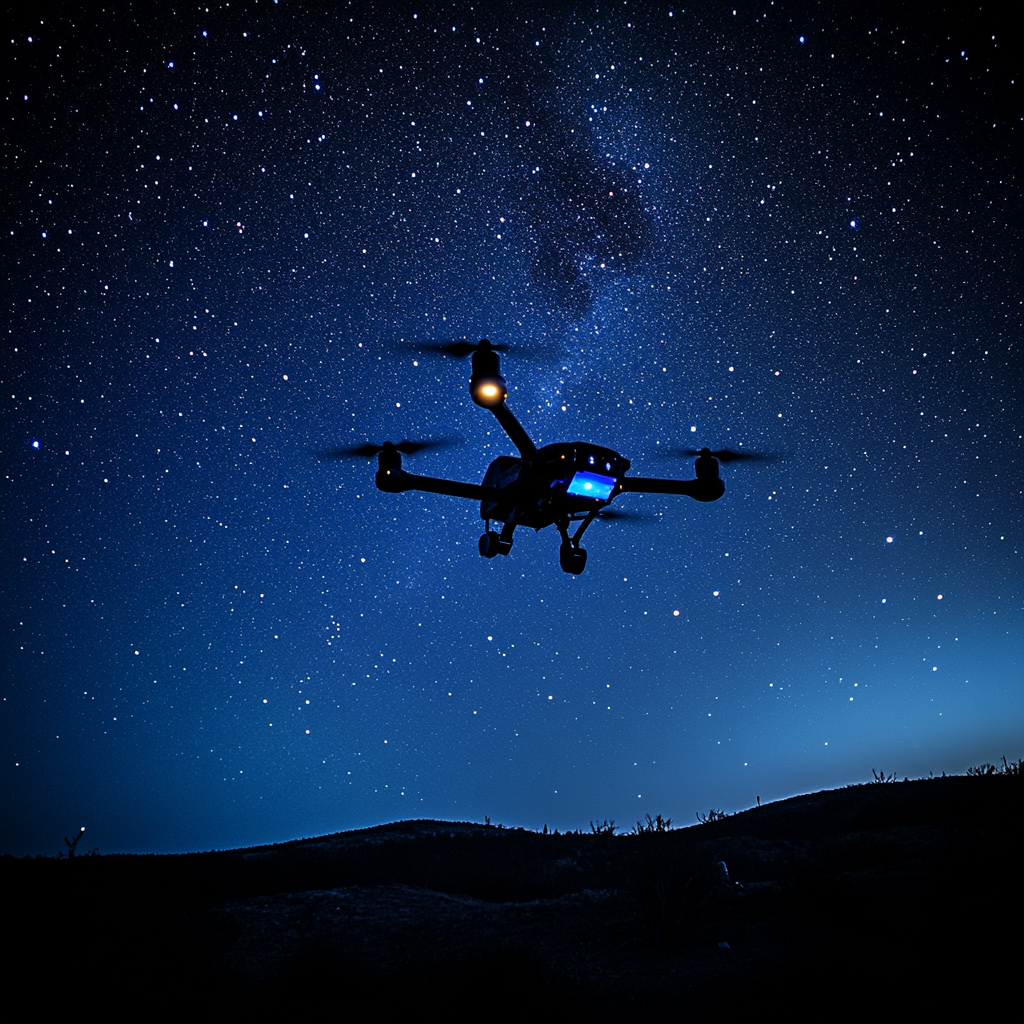
“Drone Navigation Innovates with Stellar Visual Guidance”
Navigating the New Frontier: Stars as Your Guide for Drones
Strap yourselves in, readers, because we’re about to take a whirlwind tour through the cosmos—specifically, how drones are learning to ditch the reliance on GPS and are now taking navigation cues directly from the stars. That's right! If the good old GPS has become vulnerable to jamming attacks—something that resembles a bad action movie plotline—researchers at the University of South Australia (UniSA) have come up with a stellar alternative that’s not just charmingly retro but also seriously high-tech.
The Dilemma of GPS
Picture this: You’re piloting a drone through a rugged landscape or perhaps on a reconnaissance mission in the midst of chaos. Suddenly, bam! No GPS signal. This is not just a minor inconvenience; it’s like trying to navigate a maze blindfolded. With the alarming rise of GPS jamming attacks, the vulnerable nature of traditional navigation systems has become painfully clear. And we’re talking about much more than mere annoyance here. It’s a matter of lives and missions at stake, especially in defense and environmental monitoring sectors. So what do we do? We turn our gaze upward, past the pollution of modern life, and embrace the brilliant beacons that have guided explorers for centuries.
Meet the Celestial Navigation System
UniSA's team of boffins, fortified by the keen leadership of Dr. Samuel Teague and Professor Javaan Chahl, have concocted a celestial navigation system that’s as clever as it is pragmatic. You may be wondering, how does one guide a drone through the chaos of the night sky using just stars? Here’s the breakdown—brace for some sci-fi-esque technology:
-
Visual Data Capture: Imagine strapping a camera with a wide-angle lens to your drone. This little beauty whips out stunningly clear images of the cosmos above. Think of it as turning your drone into a paparazzo for the night sky. A monochrome sensor linked to a Raspberry Pi 5? Yep, it’s that simple[5]. So, goodbye bulky navigation gear—hello sleek efficiency!
-
Algorithmic Analysis: Here comes the brainpower! The images captured are analyzed by a crafty algorithm that identifies the stars twinkling in the dark abyss. By cross-referencing with a database of celestial bodies and knowing the camera's orientation and the precise moment the photo was snapped, voilà! The drone knows its coordinates—this is the moonlighting effort of tech that plays right into nature's hands[5].
-
Integration with Autopilot Systems: In a magical twist of technology, this visual data enhances the drone's conventional autopilot systems. The outcome? A drone that can glide through the night like an owl—silent and undeterred by the whims of GPS signals[1][2][4].
The Perks of Celestial Navigation
Now, why should you be cheering for this star-studded system? Let’s explore the dazzling advantages that make this system shine brighter than a shooting star:
1. Non-Emissive Navigation
This is crucial. The system’s sheer brilliance lies in its ability to use passive celestial cues. No signals emitted = no detection, especially in military operations where stealth is the name of the game[1][3][5]. Picture it: a drone navigating stealthily at night, unnoticed, like the ninja of the skies.
2. Lightweight and Affordable
Forget heavy, complicated systems that could weigh down your drone and your budget! This celestial navigation setup is refreshingly light, cheap, and uncomplicated. In fact, it doesn’t require any clunky stabilization hardware—perfect for nimble, lightweight drones that crave freedom[1][2][4].
3. Robust Against GPS Jamming
GPS jammers and drones can wage war like an elaborate game of cat and mouse. Thankfully, this star-powered system cuts the cord with GPS vulnerabilities, making it an ideal solution for navy operations over turbulent oceans or missions in warfare zones where threats are omnipresent and real[1][2][5].
Testing: Sky’s the Limit
When researchers took this celestial wonder for a spin on a fixed-wing drone, the results were nothing short of astounding. Imagine this—positioning accuracy blazing through at a stunning four kilometers! This is impressive, considering the system's simplicity, affordability, and low weight[1][2][4]. It's a breathtaking feat, proving yet again that innovations don't need to break the bank or be imbued with unnecessary complications to be effective.
Applications and a Bright Future Ahead
This pioneering celestial navigation system is not just for drones cruising over battlefields. Its applications are as wide-reaching as the cosmos itself:
-
Defense: Enhancing operational strategies in hostile environments, allowing for drones to operate efficiently without the burden of GPS interference[1][2][5].
-
Environmental Monitoring: This technology can serve those tasked with keeping an eye on fragile ecosystems or remote locations. When GPS signals falter, the stars become our attentive guardians[1][2][3].
-
Commercial Drones: The affordability of this system makes it incredibly appealing for various commercial applications. Among the hustle and bustle of commercial drones, this system opens doors to broader operational capabilities[1][2][3].
Conclusion
As we descend from this cosmic adventure, it’s exciting to realize that we’re on the cusp of a transformative era in UAV technology. The UniSA team’s groundbreaking celestial navigation system elegantly fuses ancient techniques with cutting-edge algorithms to address the ever-increasing challenges of GNSS denial.
As drone technology continues its meteoric rise, carving its niche across numerous industries, the need for resilient and innovative navigation options will become ever more pressing. This stellar navigation approach hints at an epoch where we won’t just rely on wires and signals but instead look to the unfaltering stars above. Whether enhancing defense capabilities or exploring the expanse of our planet, this trailblazing technology is set to guide us into a secure and promising future.
Want to stay up to date with the latest news on neural networks and automation? Subscribe to our Telegram channel: @channel_neirotoken.

